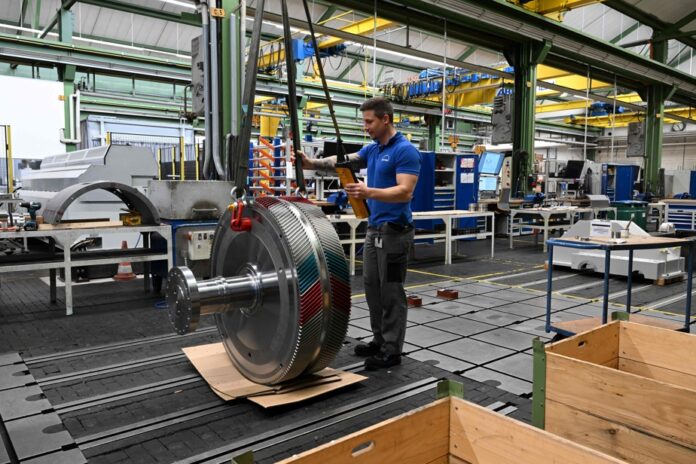(Berlin) Activity in Germany, Europe’s largest economy, entered recession in the first quarter, a temporary weakness according to the government, but against the tide of the rest of Europe.
Penalized by high inflation and the rise in interest rates, activity measured by Gross Domestic Product (GDP) fell by 0.3% between January and March over one quarter, after a decline of 0.5% between October and December, in data corrected for seasonal and calendar variations, the national statistics institute Destatis said on Thursday.
This is a recession in the technical sense, i.e. two quarters of decline in a row. This is a first since the coronavirus pandemic, which caused a drop in German GDP in the first and second quarters of 2020.
Over one year, the indicator fell by 0.5%. This final figure revises downwards a previous estimate from the end of April, which rather indicated stagnation (0.0%) in activity.
“It’s not a surprise, even if the scale of this revision is frightening,” commented Jens Oliver Niklasch, analyst for LBBW.
German industry, long dependent on cheap Russian gas, was hit hard last year after Moscow invaded Ukraine. Supplies were cut and prices soared.
Despite this, the economy seemed to hold up better than expected at the start of the year, thanks to massive public aid, increased use of liquefied gas and the start of a fall in gas prices since the fall.
The industry also benefited from the reopening of China and an easing of supply difficulties on international markets, boosting exports.
The prospect of a recession seemed to be receding. But “this optimism has given way to more realism […] Germany has indeed fallen into a winter recession”, comments Carsten Brzeski, expert for ING bank.
The publication of various economic indicators for the month of March illustrated this.
After several months of increases, production in the manufacturing sector, central to the German economic model, fell by 3.4% over one month. In particular, motor vehicle production fell by 6.5% and construction by 4.6%.
Industrial orders also fell sharply in March, by 10.7% over one month, unheard of since the trough of the pandemic. And exports, essential for this sector, fell sharply to 5.2%.
This reversal is due in particular to the fall in domestic consumption due to inflation. This remains very high, at more than 7.2% in April despite a gradual decrease.
The key rate hikes carried out with a bang by the European Central Bank (ECB) to combat this price rise have driven home the point, considerably slowing down activity.
Abroad, the country’s trading partners imported less “made in Germany” products than usual. At issue: “geopolitical turmoil, high inflation rates and loss of purchasing power,” according to the economic institute DIHK.
Despite this slowdown, the German government remains optimistic, with a growth forecast of 0.4% in 2023.
“The outlook for the German economy is very good, we are overcoming the challenges we face,” Chancellor Olaf Scholz told reporters.
His Ministry of Economy spoke of a “winter weakness” before “a marked improvement” expected afterwards.
Not everyone is so optimistic. The IMF forecast in April that German economic activity would contract by 0.1% this year, before a rebound of 1.1% in 2024.
The German situation stands out compared to its European neighbours, where the risk of recession has gradually faded thanks to the drop in energy prices.
“Germany is very widely seen as the potential black sheep of Europe,” said Guillaume Dejean, analyst for Global Market Insight.
In Belgium and France, economic activity thus increased by 0.4% and 0.2% respectively in the first quarter of 2023 compared to the previous quarter. Italy, for its part, saw its GDP rise by 0.5%.















